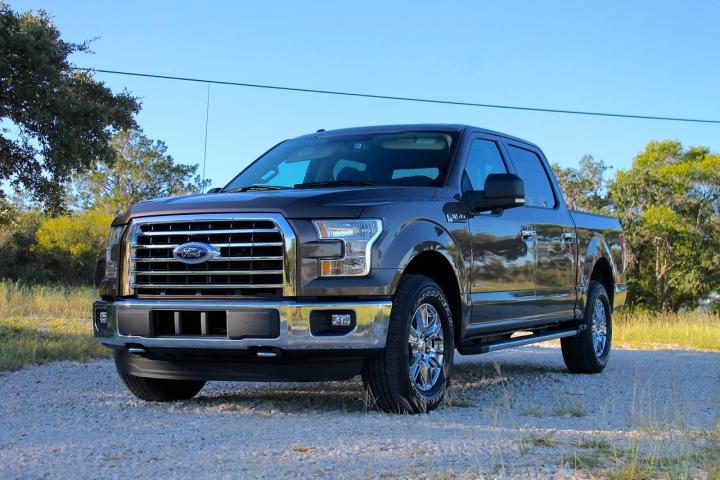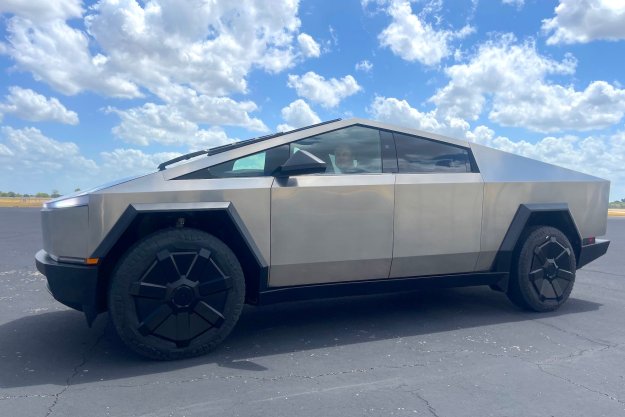
The New Year is quickly approaching and that means it is the time of year for millions of people make resolutions. Few of these end up working out, but the idea is commendable. In fact, people aren’t the only ones who could stand to make a fresh start; automakers could, too.
A few automakers already have made resolutions of a sort. Ford put its best selling F-150 on an all aluminum diet and Volvo is promising a death-proof car by 2020. So with Ford and its former subsidiary leading the way, we wanted to take a look at a few resolutions that the automotive world should be making for the start of 2015.
Be more generous … when it comes to backup cameras
Backup cameras have been a tremendous improvement for the average driver, allowing worry-free parking and reversing. Unfortunately, a lot of automakers seem to think that this means they can charge an arm and a leg for them.
This problem is especially endemic among luxury automakers, which often include reverse cameras only as part of an expensive technology package. The reasons behind this are fairly clear.

BMW, for example, wants to keep the base MSRP for a car like the 3 Series as low as possible to attract buyers into showrooms. It also knows, however, that very few of its customers are going to drive out of the showroom without that extremely attractive technology package. Therefore, it makes sense to charge something extra for it.
It may be incredibly frustrating that someone can buy a $50,000 luxury car that doesn’t come with the same standard equipment as a $20,000 hatchback. But there is a more serious issue underlying.
Regulation is going to catch up with luxury automakers soon. Industry insiders from a number of automakers have all told me that backup cameras are going to be mandated by law sooner rather than later. This is part of the reason that many mass-market automakers now include cameras as standard on all of their vehicles. Of course backup cameras are also a safety issue, hence the upcoming regulation, making the case for them pretty overwhelming.
Cut back … on transmission gears
In the last few years, automakers have decided the way forward is more transmission gears. Mercedes started the trend with its seven-speed automatic. Chrysler, though, really got things going with its ZF-designed nine-speed auto. And Acura has joined the party with a version of the ZF transmission, too.
We in the Digital Trends Cars office grumbled to ourselves, but kept fairly quiet about the growing number of gearbox speeds. That is, until we heard rumors Ford is planning a 10-speed automatic … TEN!

In theory, this sounds great. After all, if seven gears is good, ten must be trouser-troublingly awesome. The reality is that having more gears is a bit like having more wives. It sounds interesting, but it is just confusing, aggravating, and leaves one feeling pulled in a great many directions.
So it is with all the nine-speed transmissions I have experienced. They can never decide which gear to be in and frequently undermine spirited driving. Even worse, nine-speed transmissions don’t seem to improve fuel economy.
One industry consultant told me that most transmission designers think there is little or no benefit to having any more than eight gears. They are, however, more expensive to design and build, and, given their complexity, more likely to break.
So please, Ford, stick with eight gears.
Try out the hot, new diesel diet
No set of New Year’s resolutions would be complete without a diet or two. In this case, automakers should check out the exciting new fad diet: diesel. Unlike miracle cures promised by snake-oil salesmen like Dr. Oz, diesel actually works; it delivers fuel economy and performance unheard of elsewhere.
Only a few companies are seriously engaged in bringing diesel to the American market. Those that do, though, are delivering impressive results. The Fiat-sourced V6 in the Ram 1500 EcoDiesel is capable of delivering 9,000 pounds of towing capacity and nearly 30 mpg on the highway. Both are amazing figures. They become shockingly impressive, though, when one considers that the truck tips the scales at nearly 7,000 pounds.
Compare that to the other ‘eco’ truck on the market: the 2015 Ford F-150 EcoBoost. It, by comparison, delivers an EPA-rated 22 mpg and 8,500 towing capacity. In reality, though, the EcoBoost will struggle to deliver the EPA-estimated mileage. Despite what Ford’s marketing men might want you to believe, the EcoBoost engines can realistically offer either ‘Eco’ or ‘Boost,’ but not both at the same time.

But let’s get back to diesel. It isn’t just trucks that can be helped out by diesel either.
The Volkswagen Golf TDI puts up better mileage than most hybrids, costs less, and is even better for the environment. All that is great. Perhaps best of all, it delivers remarkable driving performance. The Golf TDI shows off the veritable dump truck of power that diesel is capable of delivering, even from small displacement engines.
I struggle to think of a midsize or compact car that couldn’t benefit from the addition of a diesel to its engine family. In fact, many such cars already have diesel engines … just not in the United States.
Sure, diesels don’t have a great sales record in the U.S., but, as with any diet, diesel takes some getting used to. After all, who liked — or had even heard of — kale ten years ago? Hippies, that’s who. Now it’s in everything. So let’s see some automakers take a risk and get slim with diesel.
Conclusion
The holiday binge is almost over, and once automakers are done congratulating themselves on record sales and profits this year, it is time to think about how to improve. Putting in cameras, cutting back on transmission gears, and trying on diesel for size are all doable goals that will substantially improve the automotive landscape.
The New Year is a great time to take some chances, and do the right thing. So here is hoping automakers can make some resolutions and stick with them.


